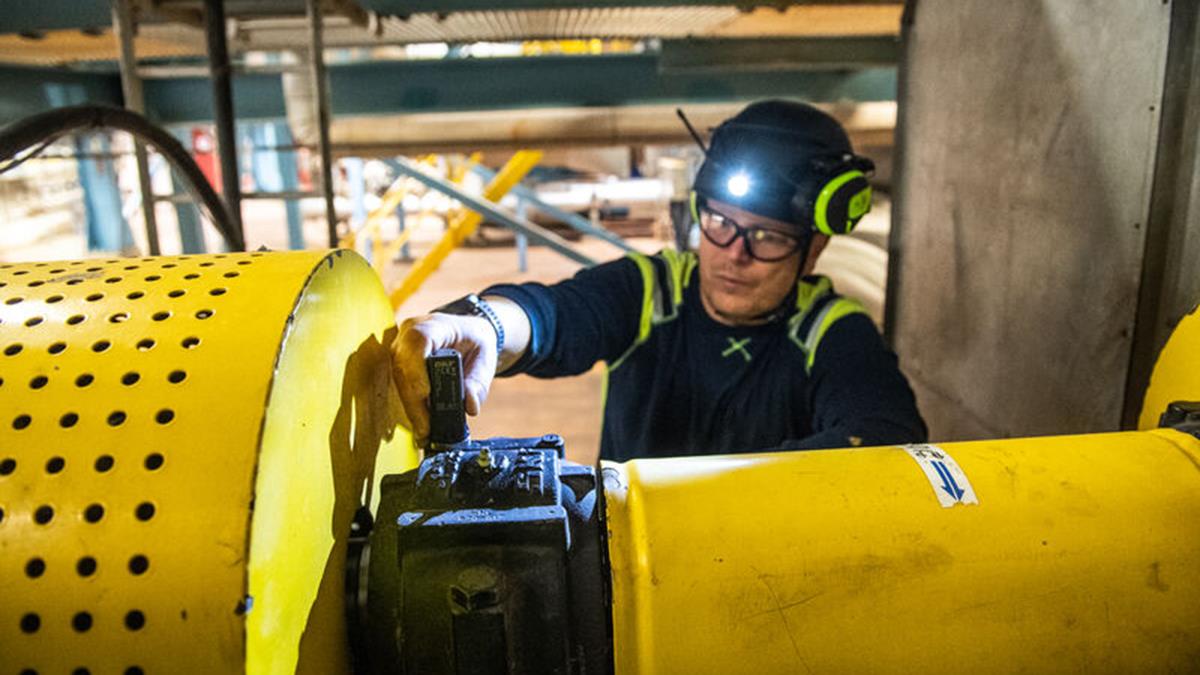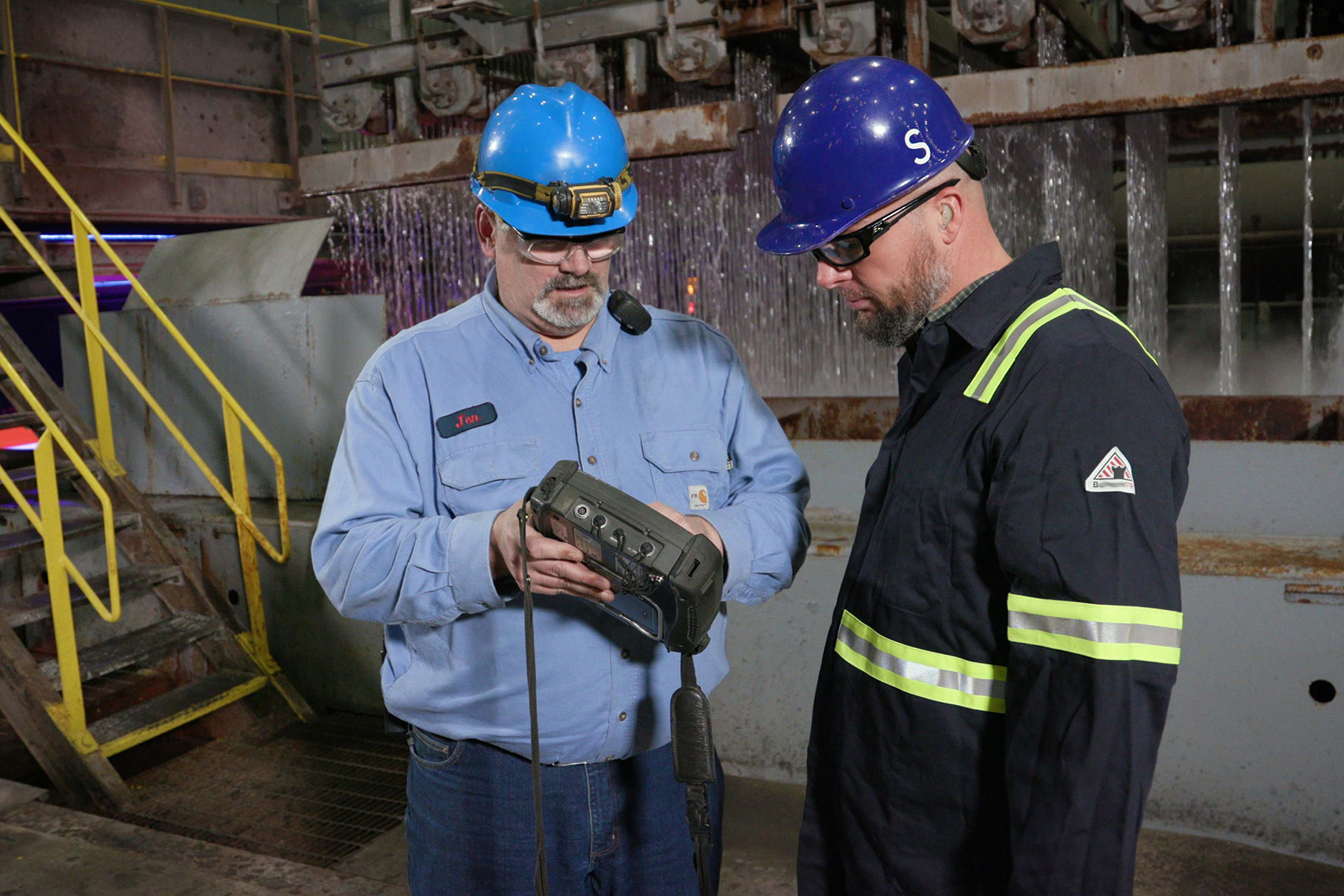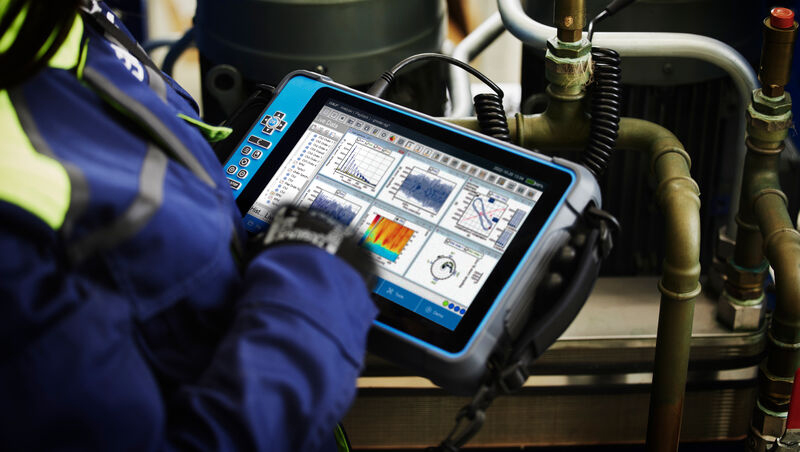Solving The Maintenance Paradox

Today’s manufacturers face a familiar challenge: the maintenance paradox. While goals are clear -- minimize downtime, maximize efficiency, and boost profitability -- the path to achieving those goals with rotating equipment is anything but straightforward. Despite the abundance of condition monitoring technology options on the market, ranging from basic anomaly detection to advanced, real-time systems, many organizations still struggle to improve reliability. What’s holding them back?
The truth is, success requires more than simply installing a sensor on a piece of rotating equipment and tracking bearing performance. Without a strategic, long-term approach, companies are unlikely to see meaningful returns -- next week, next quarter, or even next year.
To truly enhance reliability, manufacturers must adopt a systematic, data-driven roadmap that includes assessment, implementation, monitoring, detection, and correction. A proactive mindset, supported by the right reliability partner, is what separates industry leaders from those stuck in reactive cycles.
5 Key Rotating Equipment Maintenance and Reliability Trends
The maintenance and reliability landscape is evolving and experience shows that lasting results come from a comprehensive strategy, not from isolated tools or technologies. More manufacturers are adopting a closed-loop approach that goes beyond fault detection to uncover root causes, correct issues, and prevent repeat failures. This shift is being driven by emerging trends in data use, predictive strategies, and connected technologies. Here are some of the key trends driving the move toward predictive maintenance and improved reliability for rotating equipment.
1. Advanced Condition Monitoring
Many manufacturers have adopted condition monitoring using sensors and automation to track equipment and operational performance. In fact, according to Data Insights Market, the wireless condition monitoring sensor market in North America is valued at approximately $500 million in 2025, with a projected compound annual growth rate of around 15%.
Right now, most manufacturers use condition monitoring as a prognostic tool to predict machinery performance. But the next phase is more advanced. With high-quality, multifaceted data sets, companies can go beyond prediction – using this technology to support root cause failure analysis. This allows teams to understand where a fault occurred, why a bearing failed and how to prevent future occurrences. This is the evolution of condition monitoring: from predictive to prescriptive—not just identifying potential issues, but helping to prevent repeat failures and drive long-term reliability.
2. Enhanced Data Collection and Predictive Analytics
In tandem with advanced condition monitoring, the growing use of sensors across manufacturing sites is unlocking more robust data collection that supports better modeling, forecasting, and next-level analysis. High-quality data collection allows manufacturers to apply predictive analytics and, with improved machine learning,generate accurate maintenance forecasts that support proactive strategies.
3. Downtime Reduction Strategies
Any downtime -- whether planned or unplanned -- is costly. According to Siemens, it accounts for 11% of revenue among the top 500 companies—about $1.4 trillion. With improved data collection, manufacturers are shifting from interval-based maintenance to predictive maintenance strategies. This helps avoid unnecessary maintenance on equipment that is still performing well and reduces delays caused by replacement parts not being available. Predictive maintenance allows teams to plan ahead, knowing what parts will be needed and when, which helps minimize downtime and improve ROI on rotating equipment.

4. Increased Use of Virtual and Remote Technology
Virtual and remote technologies are paving the way for smarter maintenance diagnostics and troubleshooting. These tools allow analysts to review equipment data from anywhere, at any time. With this technology, manufacturers can bring in remote vibration analysts to support reliability teams or to enable condition monitoring in environments where on-site analysis is not feasible. Remote diagnostics also help maintenance teams prioritize in-person work, focusing resources on the activities that deliver the highest value.
5. Ongoing Focus on Safety, Environment and Compliance
Safety and compliance remain top priorities for manufacturers. Condition monitoring plays a key role in supporting both by tracking equipment performance and helping to identify the root causes of bearing failures. With these insights, manufacturers can proactively address potential disruptions and prevent repeat issues. This not only helps reduce safety risks and environmental waste but also improves plant efficiency by minimizing downtime.
From Trends to Transformation
These maintenance and reliability trends clearly highlight the advantages of sensor technology for rotating equipment. But successful reliability programs require more than just the right tools. What sets high-performing programs apart is a focus on strategy and follow-through.
That means understanding how machinery and bearings behave, identifying the causes of failure, and using that insight to make informed, proactive maintenance decisions. The right reliability partner will work alongside manufacturers to build a strategic, five-step roadmap that follows a systematic approach to improving reliability:
- Assess – Understand the current state of the plant and define reliability goals
- Implement – Deploy targeted improvements and sensor technologies
- Monitor – Continuously assess bearing and equipment performance
- Detect – Identify issues that could lead to failure
- Correct – Address root causes to prevent recurrence
There’s no one-size-fits-all approach to building a strategic reliability roadmap. Every plant is different, and the approach should be tailored to its specific needs. The most effective programs start small, focusing on high-impact areas where improvements can deliver immediate value. Reliability transformation doesn’t have to happen overnight—it’s a journey, not a sprint.
With so many sensor technologies available, choosing the right one can feel overwhelming. That’s why it’s critical to select tools that align with the plant’s specific needs. A strong reliability partner will guide this process by first helping define what reliability means to the organization. From there, they’ll conduct a walkthrough and a comprehensive review of current maintenancepractices to identify opportunities for improvement.
A partner with deep expertise in rotating equipment can determine the right vibration readings, recommend appropriate seal or lubrication solutions, and even identify better-suited bearings or components. From assessment through implementation, they’ll work alongside internal teams to build, execute, and refine a holistic reliability strategy designed to deliver measurable results.
What Does This Systematic Approach to Reliability Look Like in Action?
Once tailored sensor technology is deployed, vibration data begins to deliver valuable insights into how equipment is operating—or failing. Different faults produce distinct vibration signatures, allowing early detection of issues such as misalignment, imbalance, or lubrication problems. This level of advanced condition monitoring enables maintenance teams to act early and prevent costly failures.

When faults do occur, manufacturers can use vibration data while conducting root cause failure analysis to pinpoint the exact nature and location of a fault, as well as all factors that contributed to the incident. With this insight, reliability partners and maintenance teams can determine how to correct this type of failure to prevent it from happening again and improve overall system reliability. In many cases, a reliability partner can also support resolution of detected issues through mechanical services such as bearing mounting and dismounting, shaft alignment, and balancing. These services help translate insights into corrective actions that improve equipment performance and reliability. For manufacturers looking to take it one step further, a reliability partner with bearing and component expertise can offer a circular approach to reliability through remanufacturing services to restore bearing functionality and tailor parts to application-specific requirements.
The data collected through condition monitoring can also be used to identify patterns in bearing performance. Over time, continuous monitoring builds a trend history, making it possible to predict when a bearing or part is likely to fail. Predictive maintenance allows teams to address issues before they escalate, reducing downtime, extending asset life, and improving safety. Together, advanced condition monitoring and predictive maintenance empower more informed, proactive maintenance decisions.
The Road to Reliable Rotating Equipment
Every plant is different, which means a one-size-fits-all reliability approach simply doesn’t work. The key to a successful program lies in two things: selecting sensor technology that fits the plant’s specific needs, and using the data it provides to correct issues, prevent recurrence, and predict future maintenance needs.
Manufacturers can deploy all the sensors they want, but without a strategic approach, those tools won’t deliver meaningful reliability improvements.
That’s where a strong reliability partner makes the difference—helping manufacturers implement a closed-loop strategy that leverages the full potential of advanced condition monitoring and predictive maintenance. The right partner brings together technology, engineering expertise, and system design to maximize the performance of rotating equipment.
With the right combination of sensors, strategy, and partnership, manufacturers can reduce downtime, boost efficiency, and drive greater profitability.